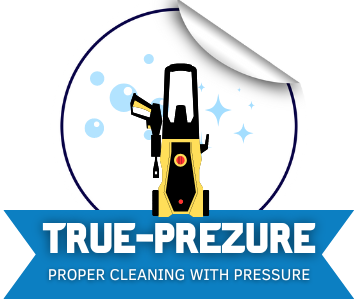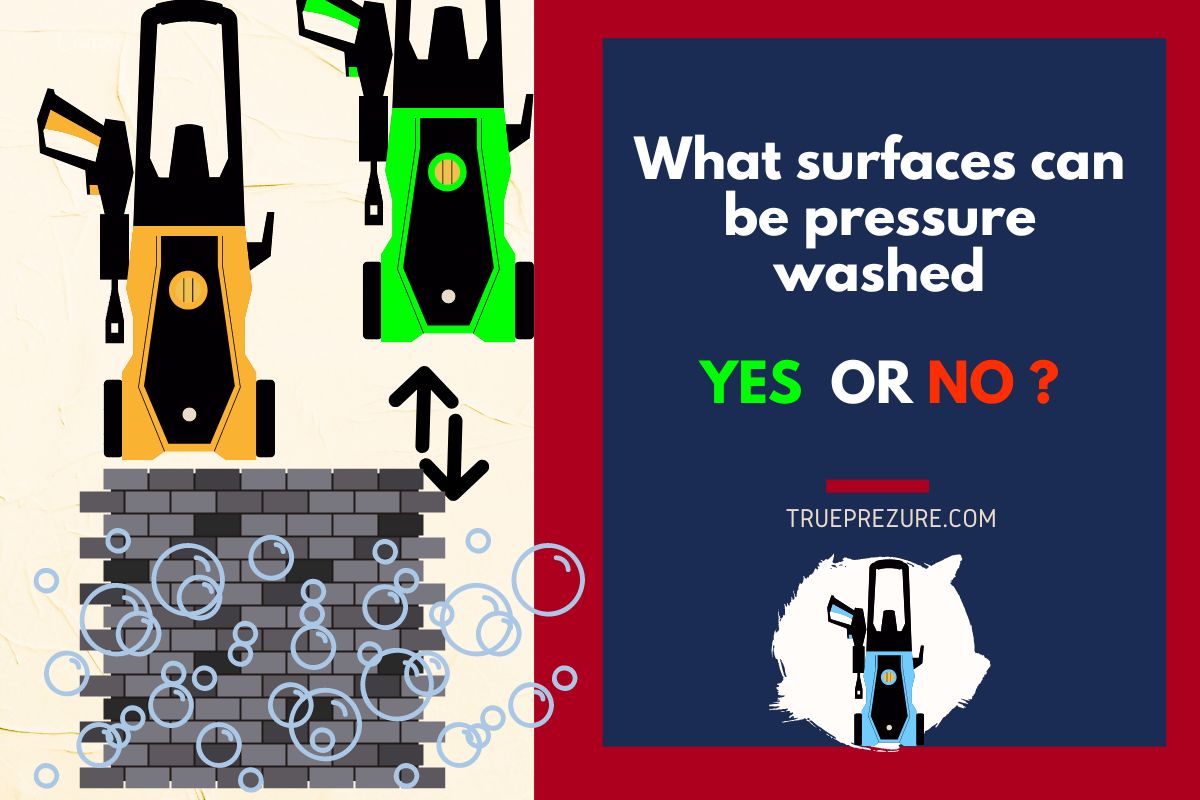Pressure washing is a highly effective and efficient method of cleaning various surfaces. It involves using high-pressure water to blast away dirt, grime, and other stubborn stains that may be difficult to remove with traditional cleaning methods.
If you’re planning on pressure washing your property, it’s essential to know which surfaces are safe for this powerful cleaning technique.
In this blog post, we’ll guide you through what surfaces can be pressure washed so that you can make informed decisions when it comes to maintaining the cleanliness of your home or business premises. So sit back and get ready for a full guide on pressure washing!
Our Recommended :
What is pressure washing?
Pressure washing is a cleaning method that involves using high-pressure water to clean dirt, grime, and other stains from various surfaces. This technique can be used on different materials such as concrete, wood, brick, stone, and metal. Pressure washing machines have a pump that pressurizes the water supply coming through the hose. The pressure level can range from 750 to 3000 PSI depending on the surface being cleaned.
One of the advantages of pressure washing is its speed and efficiency in removing dirt and stains even in hard-to-reach areas like corners or crevices. It saves time compared to manual scrubbing or brushing which requires more effort but may not produce satisfactory results.
However, it’s important to note that pressure washing should only be used on surfaces that can withstand high-pressure water without damage. Delicate surfaces like painted walls or windows should not be subjected to this kind of cleaning as they are likely to get damaged.
In summary, pressure washing is an effective way of getting rid of stubborn stains quickly and efficiently while saving time compared with traditional cleaning methods. Remember always to consider what surfaces are safe for this type of cleaning before starting your project.
What surfaces can be pressure washed?
Pressure washing is a powerful cleaning technique that uses high-pressure water to blast away dirt, grime, and stains from various surfaces. However, not all surfaces can withstand the force of pressure washing. Some materials may get damaged or discolored due to excessive pressure.
Generally, hard surfaces such as concrete, brick, and stone can be safely pressure washed without any damage. These materials are durable enough to handle the high-pressure water stream without degradation. Other outdoor surfaces like decks and patios can also be cleaned using a lower PSI (pounds per square inch) setting on the pressure washer.do you know about Ryobi Vs Greenworks Pressure Washer winner in 2023?
However, softer materials such as wood siding or delicate stucco should never be power washed at full blast because they are prone to damage easily. In these cases, it’s better to opt for soft wash techniques that use low-pressure streams along with special detergents. Best Surface Cleaner for Electric Pressure Washer
Additionally, windows and other fragile features should never be subjected to direct pressure from a power washer as they could crack or shatter under the intense force.
In summary, when considering whether an area needs pressure washing make sure you carefully evaluate if it is made up of hardy materials that will not cause harm before proceeding with your cleaning efforts.
How to pressure wash different surfaces
When it comes to pressure washing, different surfaces require different approaches. Here are some tips on how to pressure wash various surfaces:
1. Concrete: Start by using a wide spray pattern to rinse the surface and remove loose dirt and debris. Then switch to a narrow spray pattern and use detergent for tough stains.
2. Wood: Use low-pressure settings and avoid getting too close to the wood surface as high pressure can damage the material. Also, be sure to clean in the direction of the grain.
3. Brick or stone: Use a medium spray pattern with detergent for heavily soiled areas. Be careful not to damage any mortar between bricks or stones.
4. Cars and other vehicles: Use low-pressure settings with soap designed for vehicles, starting from top down.
5. Patio furniture: Use a gentle setting with mild detergent suitable for outdoor furniture materials such as plastic, aluminum or wood.
Remember that safety is important when operating your pressure washer(Kohler Vs Honda Engine Pressure Washer-Which Is Best) – always wear eye protection, never aim at people or pets, and avoid electrical hazards by keeping cords away from water sources while in use!
Tips for pressure washing
When it comes to pressure washing, there are a few tips and tricks that can make the task easier and more efficient. First and foremost, always wear protective gear such as gloves, eye protection, and closed-toe shoes. The high-pressure water stream from the washer can cause serious injury if not handled properly.
Next, start with a low-pressure setting before gradually increasing it as needed for tougher stains or surfaces. This will prevent damage to delicate materials such as wood or paint.
Another important tip is to use the appropriate nozzle for each surface being cleaned. A narrow spray pattern is best for tough stains on concrete while a wider fan pattern should be used on siding or other softer surfaces.
It’s also important to keep the pressure washer wand at a consistent distance from the surface being cleaned. Varying distances can result in an uneven clean or even damage to the material.
Always test a small area first before tackling larger sections of any surface. This will ensure that there are no unexpected issues with pressure levels or potential damage to the material being cleaned.
Alternatives to pressure washing
While pressure washing is an effective way to clean various surfaces, it may not always be the best option. Alternatives to pressure washing include using a hose and scrub brush, steam cleaning, and eco-friendly cleaning solutions.
Using a hose with a spray nozzle attachment can effectively remove dirt and grime from outdoor surfaces such as decks or sidewalks. For tougher stains, a scrub brush can be used in conjunction with the hose for added cleaning power.
Steam cleaning is another alternative to pressure washing that uses hot water vapor to clean surfaces without using harsh chemicals or high-pressure water. This method is particularly useful for indoor spaces such as carpets and upholstery.
Eco-friendly cleaning solutions are also becoming more popular alternatives to traditional pressure washing methods. These products use natural ingredients like citrus extracts or vinegar instead of harsh chemicals that can harm the environment.
Ultimately, the best method for cleaning will depend on the type of surface and level of dirt buildup present. It’s important to consider all options before deciding on which method will work best for your specific needs.
Conclusion
Remember that safety should always come first when handling a pressure washer. Always wear protective gear such as goggles and gloves, and make sure you’re standing on a stable surface while operating the machine.
If you’re not confident in using a pressure washer or feel unsure about whether a particular surface can be cleaned using this method, consider hiring professional services for help.

